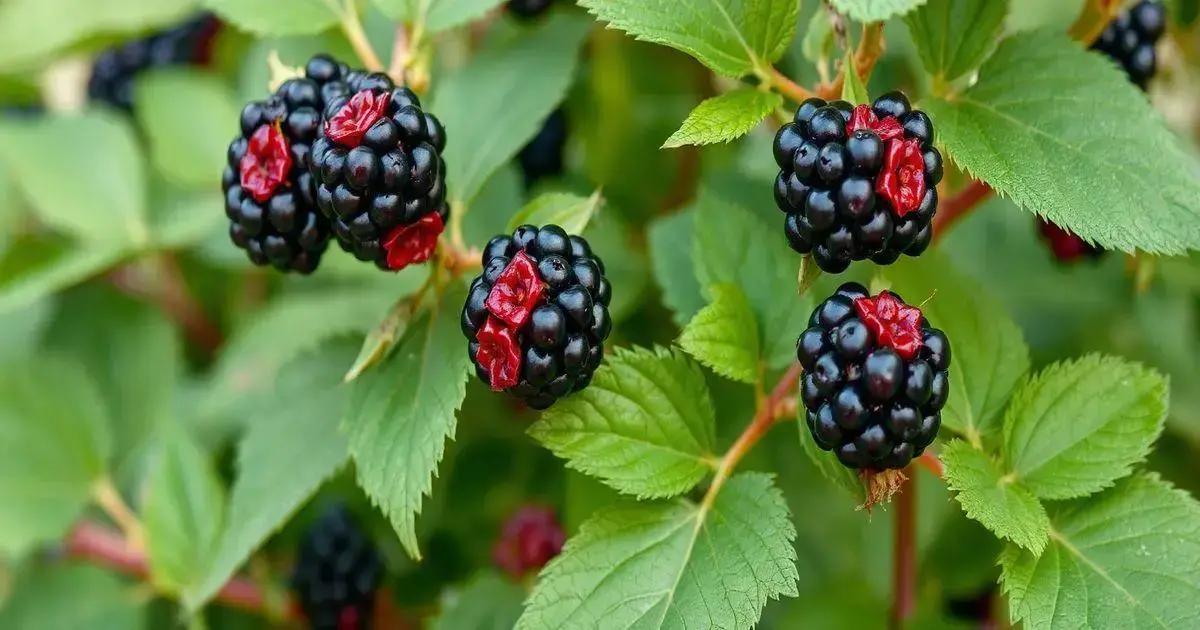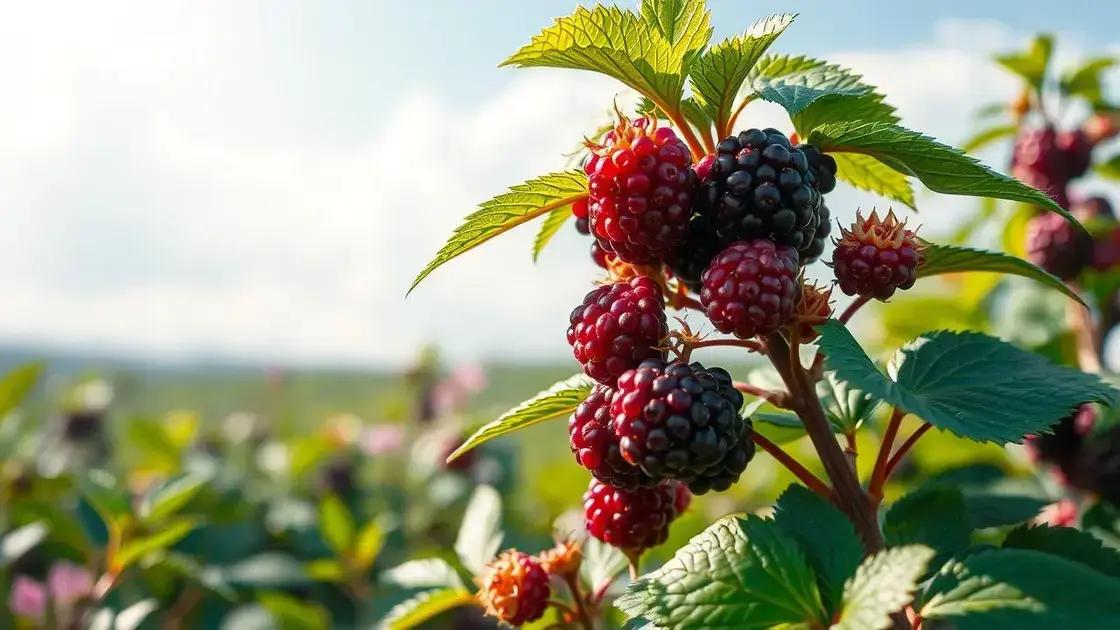How to Care for a Blackberry Plant: 7 Essential Tips for Success
How to care for a blackberry plant is crucial for anyone looking to enjoy their fruits. With the right techniques, it’s possible to cultivate a thriving blackberry bush in your garden. Whether you’re a beginner or have experience, these tips will help ensure your plants remain healthy and productive.
Table of Contents
ToggleUnderstanding blackberry plant maintenance
Understanding blackberry plant maintenance is essential for ensuring that your blackberry bushes thrive and produce juicy fruits. Proper care techniques can dramatically improve the health of your plants. Here are some vital aspects to consider when maintaining your blackberry plants:
- Soil Quality: Blackberries prefer well-draining, nutrient-rich soil with a pH between 5.5 and 6.5. Test your soil to ensure it meets these criteria.
- Watering Schedule: During the growing season, blackberries need about one inch of water per week. Adjust this based on rainfall and weather conditions.
- Sunlight Requirements: Ensure your blackberry plants receive at least six hours of direct sunlight daily for optimal growth.
- Fertilization: Fertilize your blackberry bushes in early spring using a balanced fertilizer to promote robust growth.
Pruning blackberry plants is another essential maintenance task. Here are some steps to follow:
- Identify the canes: Distinguish between last year’s growth and the new growth.
- Cut the old canes: Remove canes that have already fruited to encourage new growth.
- Thin out new growth: Leave the strongest canes and remove weaker ones to improve air circulation.
Another factor to consider is pest control for blackberries. Regularly monitor your plants for pests such as aphids and spider mites. You can use organic solutions like neem oil to manage these issues effectively.
For hands-on tips and advice, check out exploring indoor gardening techniques for more support tailored to your gardening needs.
Best watering practices for healthy blackberry growth

Best watering practices for healthy blackberry growth are crucial for ensuring that your plants thrive and produce delicious fruits. Blackberries require consistent moisture to develop properly, but care must be taken to avoid overwatering, which can lead to root rot.
Understanding the watering needs
Blackberry plants need approximately one inch of water per week during the growing season. Adjust this based on rainfall, temperature, and soil type. Here are some factors that affect watering:
- Soil Type: Sandy soils drain quickly and may need more frequent watering compared to clay soils, which retain moisture longer.
- Growth Stage: Young blackberry plants require more water to establish themselves, while mature plants can be more drought-resistant.
- Weather Conditions: Hot and dry weather increases water needs, whereas cool and wet weather can reduce the amount needed.
Methods of watering
There are several effective methods for watering blackberry plants. Consider the following:
- Drip Irrigation: This method delivers water directly to the roots, conserving moisture and reducing evaporation.
- Soaker Hoses: A soaker hose allows water to seep out slowly along its length, providing consistent moisture.
- Hand Watering: While time-consuming, this method allows for precise control over the amount of water each plant receives.
Signs of improper watering
It’s essential to recognize the signs of overwatering and underwatering:
- Overwatering Signs: Yellowing leaves, wilting, and roots exposed to waterlogged conditions.
- Underwatering Signs: Drooping leaves, stunted growth, and dry soil cracks.
For further insights and community experiences in gardening, visit exploring indoor gardening techniques for more valuable tips.
Essential sunlight and soil requirements for blackberries
Essential sunlight and soil requirements for blackberries are vital for cultivating healthy and productive plants. Blackberries thrive best in specific environmental conditions, making it crucial to understand what they need.
Sunlight needs for blackberry plants
Blackberries are sun-loving plants that require ample sunlight to produce sweet and juicy fruits. Here are key points to consider:
- Direct Sunlight: Ensure your blackberry bushes receive at least 6 to 8 hours of direct sunlight each day.
- Shade Tolerance: While they prefer full sun, blackberries can tolerate partial shade but may produce less fruit.
- Location: Choose a planting site that avoids shade from trees or buildings to maximize light exposure.
Soil conditions for optimal growth
The type of soil plays a significant role in the health of your blackberry plants. Consider the following soil characteristics:
- Soil Type: Blackberries thrive in loamy or sandy soils that offer good drainage. Heavy clay soils can cause root rot.
- pH Level: The ideal pH for blackberry plants is between 5.5 and 6.5, which helps with nutrient absorption.
- Nutrient-Rich Soil: Incorporate organic matter, such as compost, to improve soil structure and provide essential nutrients.
Testing and amending your soil
Conducting a soil test can provide valuable insights into nutrient levels and pH:
- Soil Testing: Test your soil every few years to adjust pH and nutrient content as needed.
- Amendments: Based on soil test results, use lime to raise pH or sulfur to lower it, if necessary.
For further information on maintaining healthy plants, consider checking out exploring indoor gardening techniques for more practical tips.
In conclusion
Caring for blackberry plants requires attention to essential factors such as sunlight, soil quality, and watering practices. By understanding the needs of these vibrant bushes and providing the right conditions, you can cultivate a fruitful harvest. Remember to monitor your plants regularly and adjust your care techniques based on their response to the environment. For additional insights and tips, check out tips on enhancing your indoor garden, which can further support your gardening journey.

